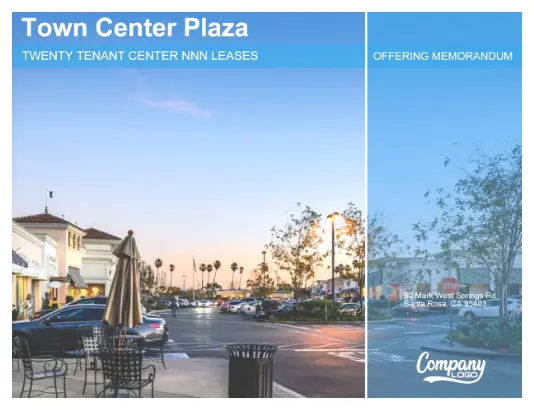Understanding Core Factor, Loss Factor and Load Factor
In commercial real estate, you’ll commonly hear and see these terms: core factor, loss factor and load factor. Just what exactly are they and how do they influence the square footage you lease and your rental costs?
Core factor, loss factor and load factor are exactly the same thing. Different terminology is used throughout the industry, but they all mean the ratio between the rented and usable space in a commercial building.
Confused? The loss factor is just a percentage difference between two area measurements. However, to properly understand its significance to your business, we need to wind back a little bit and talk about floor area in commercial leasing.
If there’s something universally true about the commercial real estate industry, it’s that just like physics, space is relative. One of the most controversial aspects of the real estate industry is how to calculate the area or square footage of a building – often a simple rectangle.
Depending on who is measuring and why, you can get a different answer.
Who measures what?
If you’re a property developer, a landlord or an investor, you’re most certainly interested in the rentable square footage, otherwise known as the gross leasable area.
This is the entire footprint of the building, as measured from the outside walls. It includes all walls, lobbys, common halls, toilets, stairways, elevators, service areas, machinery rooms, utility rooms, and other facilities.
The property owner pays for the costs to develop, maintain, advertise and improve the entire building, so it’s only fair to have these shared areas included in the rentable space.
On the other hand, if you’re a commercial tenant, you only really care about the usable space in a building.
That’s the area enclosed between the internal walls of your rented space. This is where you place computer desks, shelves with merchandise, dinner tables, etc. And while you need walls, electricity and running water in the building, they’re not really your problem.
You’re interested in the area needed to set up your shop or office. However, your landlord may argue that toilets are usable space – after all your business is conducted by human beings. Store fronts and lobbies can also be considered usable space, since customers use these areas when they visit your business.
So the further we look into the details, the more complicated it is to answer which areas are what. In fact, even different regulators like BOMA and REBNY don’t entirely agree on how areas should be measured and which facilities are regarded as usable.
You can read more about floor areas in our article – Understanding Commercial Lease Floor Areas – Gross vs Net Leasable Area
How to calculate the loss factor
Okay, now that we know the difference between area measurements, calculating the loss factor is very easy. Let’s consider the following scenario:
We’ve got an office building, with an external footprint of 25,000 sq.ft. That’s the rentable space, otherwise known as gross leasable area.
The building is segmented into several office spaces with a total internal area of 20,000 sq.ft. That’s the usable space, otherwise known as net leasable area.
The remaining 5,000 sq.ft are occupied by walls, hallways, staircases, toilets, shared kitchens and a couple of smaller utility rooms. That’s the common space.
To find the loss factor for this building, you divide the total common space to the rentable space and convert that into a percentage.
5,000 sq.ft / 25,000 sq.ft * 100% = 20% Loss Factor
Why does the loss factor matter?
As the name implies, you use the loss factor to determine your losses.
If the property is advertised with 25,000 sq.ft of rentable space, then you’re losing 20% to common areas. If you imagined 25,000 sq.ft. of desks and computers, you’ll be very disappointed.
If the property is advertised with 20,000 sq.ft of usable space, and rent is calculated based on the area, then including the common areas will raise your rent by 25%. That’s probably a lot more than you budgeted for.
Calculating loss factor for multiple tenants
If multiple tenants share the same building, then the loss factor for each tenant is calculated based on their share of the total rentable space in the building.
For example, if you rent 1,000 sq.ft. worth of office space in the same building, then your share of the total usable space is 1/20 or 5%. That means you’re also responsible for 5% of the common areas, which is 250 additional square feet.
Your total rented space is adjusted to 1,250 sq.ft. and you’ll be asked to pay 25% more than you originally thought.
Obviously, the smaller the loss factor, the more efficiently you can pack your business in a given building, reducing your annual renting costs by tens of thousands of dollars.
Can you influence the loss factor?
So the loss factor mainly depends on two things – how well and efficient the architects designed the building and how the building is being measured.
The efficiency of the layout
Property developers and landlords are also interested in a lower loss factor, as it indicates they have efficiently used their money and resources to create usable space. By maximizing usable rented space, property owners guarantee their building is more cost effective for their tenants, making it more desirable.
One of the biggest factors is the overall building shape.
A rectangular footprint will yield the most usable space since most of our furniture and equipment is rectangular and easily organized into rows or columns.
A curved or circular building, while infinitely more interesting and attractive to visitors, will offer less usable space and make that space harder to fill with desks, shelves, machines, whatever your business needs.
Of course, the sheer amount of service areas, restrooms, straicases, elevators, lobbies and other common areas will also dictate how much of the building is actually usable to its tenants. In most commercial buildings, these features are built to code – there is a specific requirement for how many of each are needed depending on the size and purpose of the building.
However, optimizing their size, location and orientation can gain a few square feet here and there. Adding this up for an entire office building or a mall will yield a substantial benefit.
The measurements of the building
Again, the loss factor is a byproduct of the measurements already taken. Depending on who, how and why took those measurements, and what standard they used, the loss factor can vary.
Negotiating the loss factor
Can you negotiate the loss factor? You can certainly try.
When negotiating a commercial lease, it’s extremely important to agree early on how the leasable area is measured, which facilities are included, what the loss factor is and how much it actually costs you to lease your business space.
Not doing so in the beginning will almost surely lead to frustration, disputes and potential losses for either or both sides of the lease. That’s not good business.
Usually commercial rent is charged per square foot of space – for example $3 per sq.ft per month.
The first thing to ask is whether that’s the rentable area or usable area being charged. Usually, it’s the former. Then, request a breakdown of the rentable and usable space, as well as the loss factor.
If you perceive the loss factor too big, try negotiating the price based on the usable area.
It’s best to shop around and compare loss factors between multiple buildings to see which one is the most efficient for your business. Then, armed with this information, you can bargain with the owner of the building you actually like to bring the price down a fair amount.
Perhaps you can negotiate a smaller price, for a longer lease term, which will guarantee your landlord they have stable occupancy and return on their investment.
If lowering the rent or changing the loss factor is not an option, you can try reducing other costs such as building taxes, maintenance, landscaping, etc. Alternatively, you can demand certain improvements to the property which will benefit your business, helping you offset the rental cost.
What if you can’t bring the price down?
Sometimes, you’re just getting a good price.
Even if you think the loss factor is too high, there’s little you can actually do to force the price down.
However, you should still always investigate this matter in order to go into a commercial lease fully prepared and aware of the true benefits and drawbacks to the deal.




